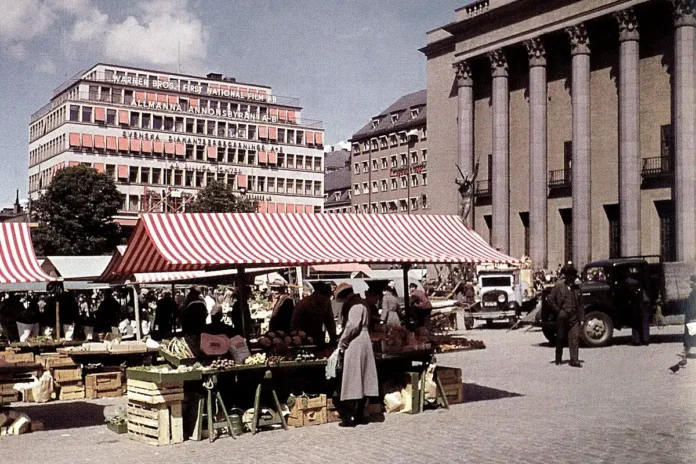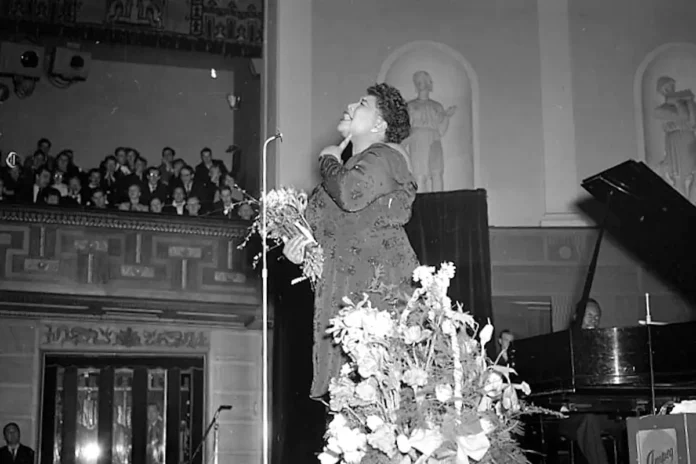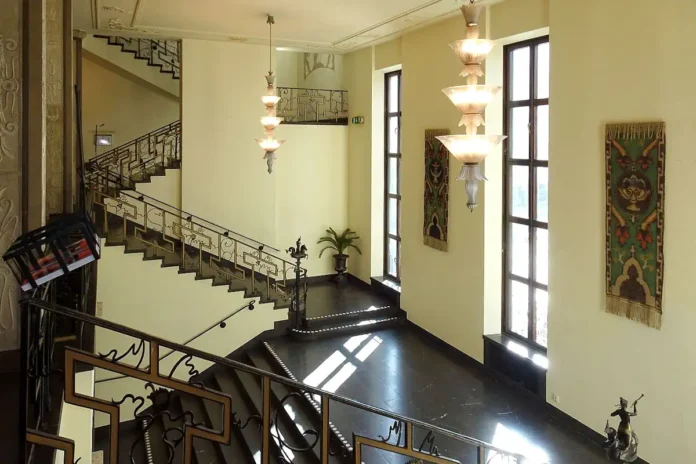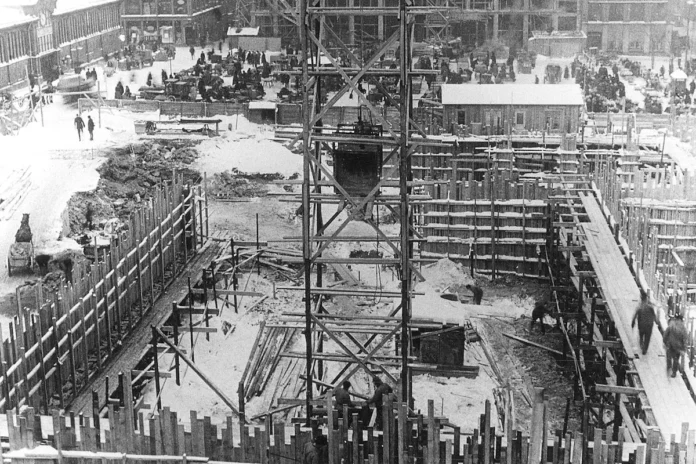A stunning example of Swedish neoclassical architecture, the Stockholm Concert Hall (Stockholms konserthus) is tucked away in the busy Hötorget square. Since its opening in 1926, this famous blue structure—designed by renowned architect Ivar Tengbom—has served as a cultural landmark.
Architectural marvel
The concert hall’s striking facade is instantly recognizable due to its distinctive light blue color and ten tall Corinthian columns. Tengbom’s design skillfully combines modernism and classical elements to create a massive, austere building that has endured over time.
Cultural significance
Stockholm Concert Hall serves multiple important functions:
- Home to the Royal Stockholm Philharmonic Orchestra
- Venue for the annual Nobel Prize Award Ceremony (except for the Peace Prize)
- The venue hosts over 200 concerts annually, including orchestral, chamber, jazz, and world music performances.
Interior highlights
The building houses three main halls:
- Main Hall: Seats 1,770 people, renovated in 1971 to improve acoustics.
- Grünewald Hall: Features a magnificent Renaissance interior
- Aulin Hall: The smallest of the three, named after composer Tor Aulin.
The architect: Ivar Tengbom
The famous Swedish architect Ivar Tengbom (1878–1968) created the Stockholm Concert Hall, which was finished in 1926. Tengbom, who is renowned for his neoclassical design, was a trailblazer in early 20th-century Swedish architecture. His design for the Concert Hall is a prime example of the “Swedish Grace” movement, with its characteristic blue facade and Corinthian columns. Other noteworthy structures that are part of Tengbom’s legacy include the Swedish Institute in Rome and the Stockholm School of Economics.
Nearby attractions
After visiting the Stockholm Concert Hall, explore the vibrant Hötorget area and its surroundings.
- Located one level below street level, Hötorgshallen is a sizable indoor market that provides a full range of culinary options.
- Orpheus Fountain: A striking sculpture by Carl Milles in front of the Concert Hall.
- Hallwyl House Museum (Hallwylska Museet): Near the Paradox Museum, the Hallwyl House Museum showcases the lavish lifestyle of Swedish aristocracy in the late 19th century.
- Klara Church (Klara kyrka): Situated near Stockholm’s central district, Klara Church is a significant Gothic landmark from the 16th century.
- Kungsträdgården: Close to the Paradox Museum, Kungsträdgården, or the King’s Garden, is a historic and beloved public park.
- The Strindberg Museum (Strindbergsmuseet): This museum, located in the Blue Tower, was the final home of August Strindberg, a renowned Swedish writer and artist.
A must-see location for visitors to the Swedish capital, Stockholm Concert Hall offers the ideal fusion of history, culture, and architectural beauty.











